Contents
Guide


The author and publisher have provided this e-book to you for your personal use only. You may not make this e-book publicly available in any way. Copyright infringement is against the law. If you believe the copy of this e-book you are reading infringes on the authors copyright, please notify the publisher at: http://us.macmillanusa.com/piracy.
Please note that some of the links referenced in this work are no longer active.
Thirty years ago I asked
you to stand by me, and you have.
This ones for you, Mary.

Courtesy of Tim Kirk
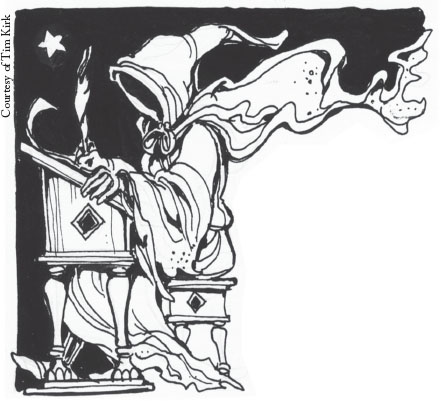
This book is the third iteration of The Stephen King Companion. The first edition was published in 1989; the second, in 1995; and this third, in 2015, owing to Kings prolific output during the past twenty years.
In 1989, as reported to Time magazine, Kings publishers celebrated the fact that King had published 20-odd books that sold 60 million copies earning him  20 million. But by the end of 2015, King will have published, according to his Web site, 74 books (56 novels, 7 nonfiction, and 11 story collections) that have sold an estimated 350 million copies (biography.com).
20 million. But by the end of 2015, King will have published, according to his Web site, 74 books (56 novels, 7 nonfiction, and 11 story collections) that have sold an estimated 350 million copies (biography.com).
But his real life is not about the fame or the fortune; its all about storytelling.
This book celebrates his storytelling, from the early days when he was self-publishing in a few dozen copies in rural Maine, to Revival, which reached millions of readers worldwide.
My approach to the book is clearly pop culture, not academic; in other words, a college professor, I aint. Ive arranged the contents chronologically and in context, so youll get a sense of his life and times; the text herein is spiced with interviews, anecdotes, factoids, and commentary by important figures in the King community. For a retrospective book like this, a wide range of voices is essential.
Because Kings early years in Durham and in college are critical to understanding him and his work, Ive devoted considerable space to both, to lay the necessary groundwork for the discussions of the books that follow. Consider both skeleton keys to unlocking Kings fiction.
This book is an overview covering four decades, written with Kings new fans in mind, especially younger readers who watched Under the Dome on TV or picked up his latest novel and wondered, Who is this guy, and what else has this guy written?
This book answers that question. But despite its length, it could have been far longer had space not been a consideration: Writing about Stephens career requires king-size books: Stephen Spignesis 1991 The Complete Stephen King Encyclopedia is 780 letter-sized pages, and Robin Furths Stephen Kings The Dark Tower:The Complete Concordance (revised and updated in 2012) runs 688 pages.
Given his popularity and visibility, King will assuredly be the subject of many more books in the years to come.
The text to this book is supplemented by artwork by Michael Whelan and Glenn Chadbourne, and by photos from my files taken since 1988. Both the art and photos herein give a dimension to this book that text alone cannot achieve.
By the way, there is some unavoidable duplication of text in this book because this is a companion book with both original and reprinted material.
One final note: Just as I finished up this book, Rocky Wooda well-regarded and highly respected King criticpassed on. Unlike some others, Rocky always gave credit when due, and his sudden departure is an immeasurable loss. As Stephen King wrote, Rocky, you rock.
Rock on.
George Beahm
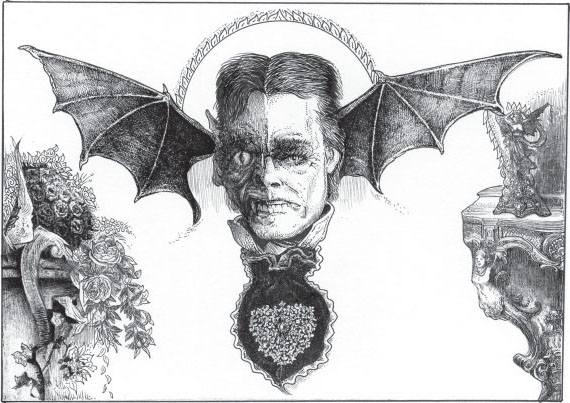
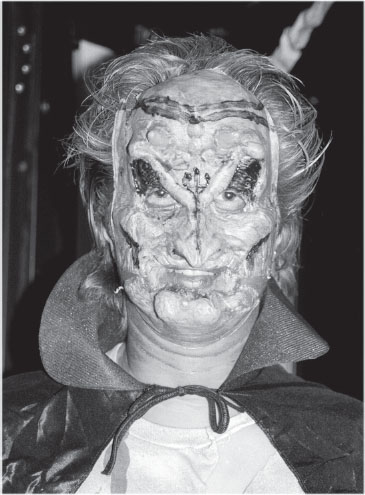
Writers are exorcists of their own demons.
M ARIO V ARGAS L LOSA
Now the simple fact of horror fiction in whatever medium you choose the bedrock of horror fiction, we might say, is simply this: you gotta scare the audience. Sooner or later you gotta put on the gruesome mask and go booga-booga.
S TEPHEN K ING, Danse Macabre



This introduction is dedicated to the memory of Rocky Wood
In order for the light to shine so brightly, the darkness must be present.
F RANCIS B ACON
It was the possibility of darkness that made the day seem so bright.
S TEPHEN K ING , W OLVES OF THE C ALLA
Is writing nature or nurture?
Is the ability to write brilliantly inherent? Is it in the genes? Or is it just a craft that one gets better at with hard work?
Lately, whenever I speak about Stephen King in different venues, I read aloud a brief excerpt from the writings of Joe Hill, Stephen Kings eldest son. I then ask the audience if they believe that Stephen King wrote what they just heard.

King reading from The Revenge of Lard Ass Hogan for an event with JK Rowling and John Irving in NYC, August 1-2, 2006.
The majority of times, they say yes.
King himself was once asked what would happen to his unfinished works if he unexpectedly, yknow, took a ride on a pale horse. His response was revealing, and boiled down to Joe could finish them.
Is it a coincidence that the writers Stephen King and Tabitha King gave birth to a son who ended up being a writer and, more important, a writer whose work reads like that of his fathers?
I dont think so.
And let us not overlook the fact that their other children are also writers. Owen is a novelist; Naomi writes essays and sermons.
I teach composition at the university level, and I ceaselessly emphasize to my students that writing is, indeed, a craft that can be learned. We wouldnt attempt to wire a house without learning the skills of an electrician. Language skills and rules; syntax and diction guidelines; and, of course, a voluminous vocabulary need to be learned and fully absorbed before we can use these tools effectively. This is sadly proved by reading the writings of people who may have a terrific imagination, but who never troubled to acquire the fundamentals of grammar and writing. As Irving Berlin said, Talent is only a starting point. And King himself weighs in on this in


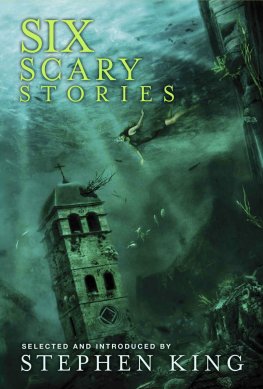



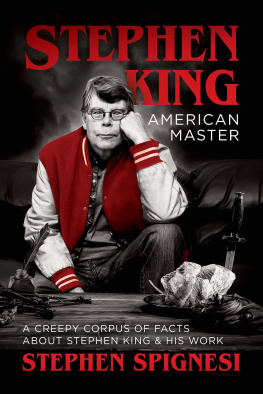


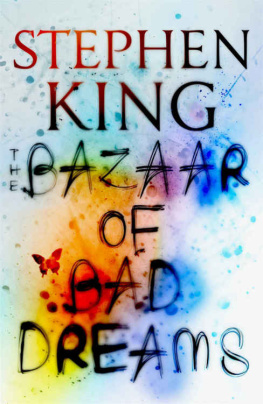


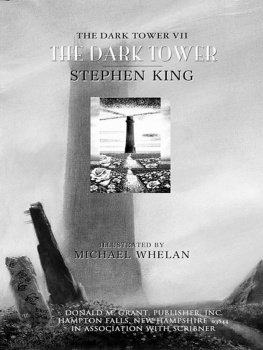





 20 million. But by the end of 2015, King will have published, according to his Web site, 74 books (56 novels, 7 nonfiction, and 11 story collections) that have sold an estimated 350 million copies (biography.com).
20 million. But by the end of 2015, King will have published, according to his Web site, 74 books (56 novels, 7 nonfiction, and 11 story collections) that have sold an estimated 350 million copies (biography.com).




